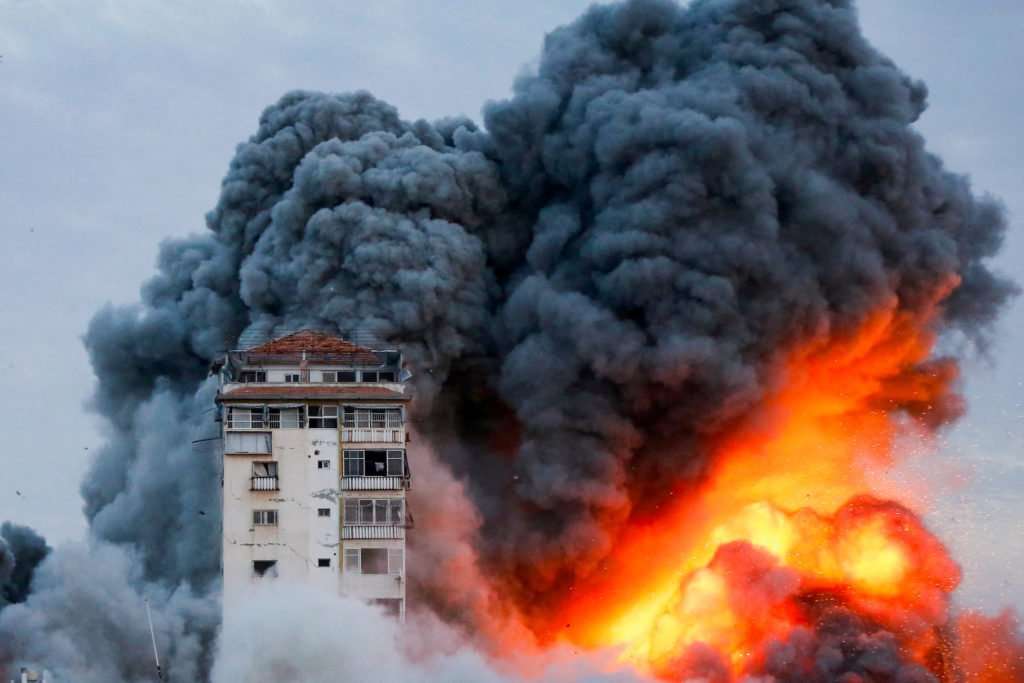The Internet as a Weapon: Hamas’s Online Terror Campaign
The Internet as a Weapon: Hamas’s Online Terror Campaign
New Delhi : The recent attacks on Israel by Hamas involved a multifaceted approach, including land, sea, air, and an online component. This online aspect of their campaign featured the dissemination of terror propaganda, including violent videos and graphic images of civilian and soldier kidnappings and murders through various social media platforms.
Graham Brookie, the senior director of the Atlantic Council’s Digital Forensic Research Lab, emphasized that Hamas leveraged a comprehensive online strategy, streaming content from the war zone in near-real-time. This tactic was designed to exploit Israel’s widespread use of smartphones and social media, making it an essential part of their overall attack planning.

The intensity and volume of the propaganda shared online during this conflict were particularly striking, according to experts on Brookie’s team. They noted that this was unlike anything they had seen before. Hamas had even threatened to broadcast executions of hostages, further increasing the gravity of the situation.
Colin P. Clarke, the director of research at the Soufan Group, a global intelligence and security consultancy, highlighted that spreading propaganda on social media networks, especially those with lax moderation systems, has become a low-cost yet highly effective tactic employed by terrorist groups. The videos and images shared by Hamas-affiliated accounts were disseminated by allies and unwitting participants worldwide.
This approach mirrors the tactics previously used by groups like the Islamic State and al-Qaida, which pioneered the use of viral psychological warfare by live-streaming graphic content such as beheadings. Hamas used official accounts on platforms like Telegram, which, although used for legitimate purposes, has a history of being embraced by terrorists due to its minimal content moderation.
Social Media’s Role in Hamas Propaganda Dissemination
Hamas-affiliated accounts were active on Telegram and other platforms, leading to the spreading of terror propaganda to mainstream platforms and messaging apps, with X being a prominent example. X, formerly known as Twitter, faced criticism for a lack of preparedness and inadequate moderation, particularly after it had reduced its trust and safety teams. This led to the dissemination of Hamas propaganda across various platforms.

In response to the situation, X announced it was removing newly created Hamas-affiliated accounts and collaborating with other platforms to prevent the distribution of terrorist content. It also recommended users adjust their sensitive media settings to avoid disturbing content.
The UK summoned social media executives to demand the removal of violent content related to the Hamas attacks. However, Telegram and X did not immediately respond to requests for comment.
Experts like Colin P. Clarke warned that if social media sites continue to weaken their guardrails and safeguards, the situation is likely to worsen in future conflicts. This phenomenon is considered a facet of “fourth generation warfare,” where propaganda and disinformation play a significant role.
A report from the Tech Transparency Project highlighted that once propaganda and disinformation reach X, the platform allows for their sharing and even monetization. The report revealed that premium subscriber accounts on X shared Hamas propaganda, including violent and graphic content, despite violating X’s policies. Some of the content violated X’s policies on violent and hateful entities and the promotion of terrorist organizations.

The TTP report also found verified X users with large followings spreading uncensored Hamas propaganda videos. Some of these videos showed graphic and violent content related to the attacks on Israel.
Katie A. Paul, the director of the Tech Transparency Project, emphasized that X needs to enforce its existing rules effectively and prevent the monetization of Hamas propaganda on its platform. Brookie noted that social media platforms are struggling to shield users from various types of harmful content, including terror propaganda and misinformation.
Major social media platforms are working with the Global Internet Forum to Counter Terrorism (GIFCT) to prevent terrorists and violent extremists from exploiting digital platforms. These platforms are dedicating resources to moderate content related to the Israel-Hamas conflict.
In summary, the recent conflict between Israel and Hamas saw the extensive use of social media for spreading propaganda, prompting concerns about the effectiveness of content moderation and the potential for further challenges in future conflicts.












Post Comment
You must be logged in to post a comment.